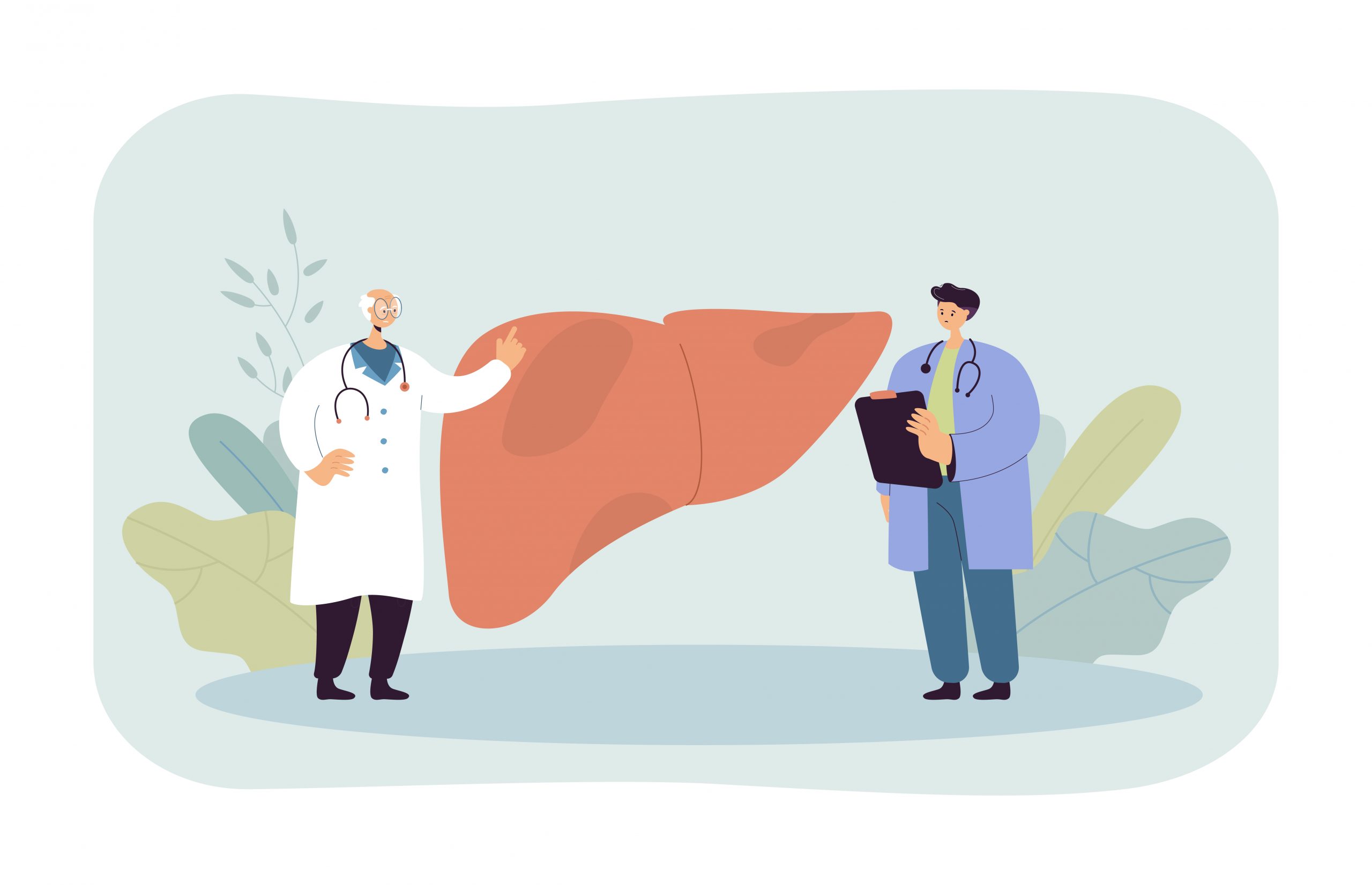

A novel strategy for liver cancer treatment may have been discovered by researchers at the National Institutes of Health and Massachusetts General Hospital in Boston. This discovery could result in the creation of a new class of anticancer medications. Researchers discovered that an enzyme produced in liver cancer cells might transform a collection of substances into anticancer medications, killing cells and lessening illness in animals, in a series of tests in cells and mice.
According to the researchers, the development of a novel liver cancer treatment and possibly other cancers and disorders could use this enzyme as a possible target.
“We found a molecule that kills cells in a rare liver cancer in a unique way,” said translational scientist Matthew Hall, PhD, one of the leaders of the work at NIH’s National Center for Advancing Translational Sciences (NCATS). “It emerged from a screening to find molecules that selectively kill human liver cancer cells. It took a lot of work to figure out that the molecule is converted by an enzyme in these liver cancer cells, creating a toxic, anticancer drug.”
The findings were published in Nature Cancer on March 13 by Hall, Nabeel Bardeesy, PhD, a liver cancer expert at Massachusetts General Hospital, and their colleagues.
The discovery resulted from a partnership between researchers from NCATS and Massachusetts General Hospital. In the beginning, Bardeesy focused on cholangiocarcinoma, a kind of liver cancer that impacts the bile duct. IDH1 enzyme mutations are a feature of the malignancy. The goal of Bardeesy’s team was to identify substances and medications that might be useful in treating the IDH1 mutation. Hall and other NCATS researchers worked together to quickly screen thousands of licenced medications and cancer-related investigational compounds for their ability to kill cholangiocarcinoma cells with the target IDH1.
Scientists discovered a number of chemicals, including one known as YC-1, that may eradicate cancer cells. Yet when they examined YC-1’s operation, they found that the drug had no effect on the IDH1 mutation.
Massachusetts scientists demonstrated that SULT1A1 was produced by liver cancer cells. The YC-1 chemical was activated by the enzyme, rendering it hazardous to tumour cells in both rodent models of liver cancer and cancer cell cultures. In the animal models treated with YC-1, the liver tumours either exhibited reduced growth or shrunk. In contrast, when YC-1 was applied to tumours in mice whose cancer cells lacked the enzyme, the researchers observed no alterations.
To connect drug activity with SULT1A1 activity, the researchers looked through various databases of drug screening results in compound and drug libraries. They also searched a sizable database of anticancer substances maintained by the National Cancer Institute in search of new candidates to test for the compounds’ enzymatic activity.
They discovered a number of chemical classes that depended on SULT1A1 for their tumour-killing effects. They anticipated other substances that most likely also were SULT1A1-dependent using computational techniques.
“Once we found SULT1A1 activated YC-1, it led us to ask, “What other compounds are active and can kill cells by the same mechanism?” Hall said. “Can we identify other compounds that were being developed and demonstrate that they were also active because of SULT1A1 activation? The answer was yes. We found other compounds with the same mechanism of action as YC-1.”
The researchers contend that these results have wider ramifications for creating a liver cancer treatment. According to Bardeesy, “we believe these compounds have the potential to be an underutilised class of anticancer medicines that depend on SULT1A1 for their efficacy against malignancies.
The scientists view YC-1 and related chemicals as templates for creating drugs that might be efficient against critical cell-surface proteins. These molecules could be made to be more specific for these proteins by changing various aspects of them. The development of a “toolkit of SULT1A1-activated compounds,” according to the researchers, might have an impact on a variety of targets.
Such a toolbox consists of a large number of well-known compounds. The sulfotransferases, which are active in various body tissues, are a broad category of enzymes that are theoretically covered by the toolkit. For instance, human SULT4A1 sulfotransferase is active in the brain in addition to SULT1A1. A portion of the molecules in the toolkit can be activated by it. This could be helpful in creating medications specifically for brain malignancies.
“We knew SULT1A1-dependent drugs had already been identified,” Bardeesy said. “Our results suggest there could be other SULT1A1-dependent compounds with ranges of different targets. Identifying such compounds and targets on cells could have potential implications for developing other types of small molecules and drugs, not just limited to these cancers. This might become a new approach for some diseases.”
more recommended stories
 Spatial Computing Explains How Brain Organizes Cognition
Spatial Computing Explains How Brain Organizes CognitionKey Takeaways (Quick Summary) MIT researchers.
 Gestational Diabetes Risk Identified by Blood Metabolites
Gestational Diabetes Risk Identified by Blood MetabolitesKey Takeaways (Quick Summary for Clinicians).
 Phage Therapy Study Reveals RNA-Based Infection Control
Phage Therapy Study Reveals RNA-Based Infection ControlKey Takeaways (Quick Summary) Researchers uncovered.
 Pelvic Floor Disorders: Treatable Yet Often Ignored
Pelvic Floor Disorders: Treatable Yet Often IgnoredKey Takeaways (Quick Summary) Pelvic floor.
 Urine-Based microRNA Aging Clock Predicts Biological Age
Urine-Based microRNA Aging Clock Predicts Biological AgeKey Takeaways (Quick Summary) Researchers developed.
 Circadian Control of Neutrophils in Myocardial Infarction
Circadian Control of Neutrophils in Myocardial InfarctionKey Takeaways for HCPs Neutrophil activity.
 E-Cigarette Use and Heart Attack Risk in Former Smokers
E-Cigarette Use and Heart Attack Risk in Former SmokersKey Takeaways for Clinicians and Nurses.
 36-Week Pre-eclampsia Screening May Reduce Term Risk
36-Week Pre-eclampsia Screening May Reduce Term RiskA New Preventive Strategy for Term.
 Cardiovascular Risk and Sudden Cardiac Death in Diabetes
Cardiovascular Risk and Sudden Cardiac Death in DiabetesRising Sudden Cardiac Death (SCD) Risk.
 Poor Kidney Function and Alzheimer’s Biomarkers Explained
Poor Kidney Function and Alzheimer’s Biomarkers ExplainedPoor kidney function may influence levels.

Leave a Comment